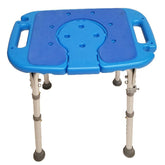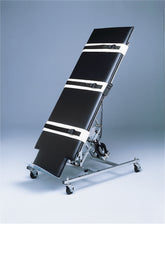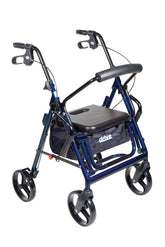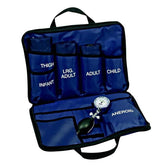
Common Mistakes When Using DVT Pumps and How to Avoid Them
Blood clots can change everything in an instant. They’re silent, often forming without any warning, and can become life-threatening if they travel to the lungs or brain. For patients recovering from surgery, spending long hours in a hospital bed, or living with limited mobility, DVT pumps are often the frontline defense against clots.
But here’s something to note: these pumps only work if they’re used properly. And that’s where things often go wrong. Caregivers might rush through setup. Patients may not know how long to wear them. Sometimes, sleeves don’t fit the way they should. Small mistakes can add up, and suddenly, the pump isn’t doing the job it was designed for.
So, if you’re a caregiver, a doctor, or someone supporting a patient at home, what should you be watching for? Let’s walk through the most common mistakes with DVT pumps and how to avoid them.
Mistake 1: Using the Wrong Size
It might seem like one size fits all, but it doesn’t. A sleeve that’s too loose won’t provide enough compression, and one that’s too tight can cut off circulation.
How to avoid it: Measure carefully. Double-check the sizing guide before putting the pump on. And remember, swelling can change a patient’s leg size over time; what fits last month may not fit today.
Mistake 2: Poor Positioning
A pump can’t do its job if the sleeves are bunched, twisted, or sliding down the leg.
How to avoid it: Smooth out the sleeve against the skin. Make sure the tubes aren’t bent or kinked. Encourage patients to lie flat or recline with legs extended for the best results.
Mistake 3: Not Following the Right Schedule
Some caregivers take pumps off too soon. Others leave them on longer than recommended. Both are problems.
How to avoid it: Stick to the plan outlined by the doctor. Many devices come with timers—use them. If more than one person is caring for the patient, keep a simple log to track usage.
Mistake 4: Forgetting to Check the Skin
It’s easy to assume everything is fine once the pump is running. But patients with sensitive skin can develop redness or pressure spots if no one is paying attention.
How to avoid it: Do a quick skin check before and after every session. If you notice irritation or swelling, stop and talk to the physician. Protective liners or padding can also help.
Mistake 5: Skipping Maintenance
A DVT pump is a device, and devices have to be maintained. They can lose effectiveness through dust, leaks, or broken tubes.
Prevention: Wipe down the device, clean the sleeves, and inspect the tubing to ensure it has no cracks or leaks. With a properly maintained pump, it not only works better but also lasts longer.
Mistake 6: Lack of Training
Too many patients and caregivers are left with a pump that literally has no directions. Unsurprisingly, that leads to mistakes.
How to avoid it: Learn the proper use of the device. If the pump is provided at the beginning, ask for the demonstration. Ensure that patients and their caregivers are aware of how to alter settings, lock the sleeves, or check warning lights or alarms.
Mistake 7: Relying on the Pump Alone
DVT pumps are powerful, but they’re not the whole story. Some people think once the pump is strapped on, that’s all that’s needed.
How to avoid it: Use the pump as part of a bigger plan. Encourage patients to move when it’s safe, drink water, and follow medical advice. Pumps are a piece of prevention—not the only piece.
Quick Tips for Safer, More Effective Use
-
Always double-check fit and placement.
-
Follow the prescribed schedule, not just what feels convenient.
-
Keep the equipment clean and in good working order.
-
Watch the patient’s comfort level and skin health.
Make sure everyone involved knows how to operate the device correctly.
Why the Right Equipment Partner Matters
It is easier to avoid errors by having the right tools to begin with. Not all equipment is made equally, and high-quality DVT pumps are supposed to be reliable, comfortable, and easy to use. That is why it is as important to find a reliable supplier as it is to learn how to use the device properly.
Cathedral Ledge Medical Supplies has been serving hospitals, clinics, and caregivers over the years with medical equipment that includes the simple needs of nebulizers to more complex items such as ambulance stretchers and DVT pumps. They not only sell equipment but also offer you the proper backing to use it without fear that you are on your own.
In the case of DVT pumps, the specifications count. You will be able to ensure that the patients receive the protection they deserve and peace of mind they deserve by avoiding these common pitfalls and collaborating with a supplier you can trust.





